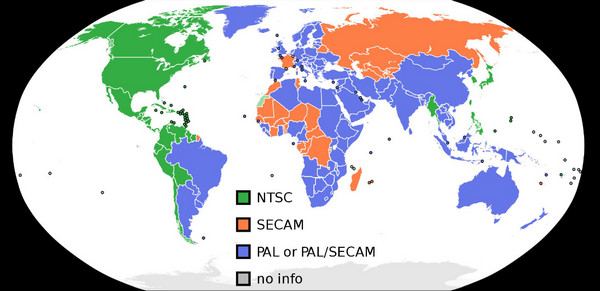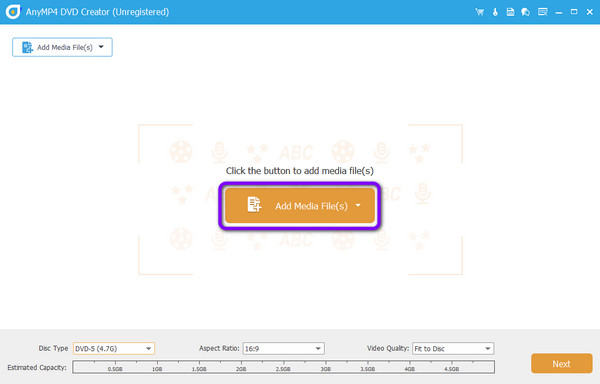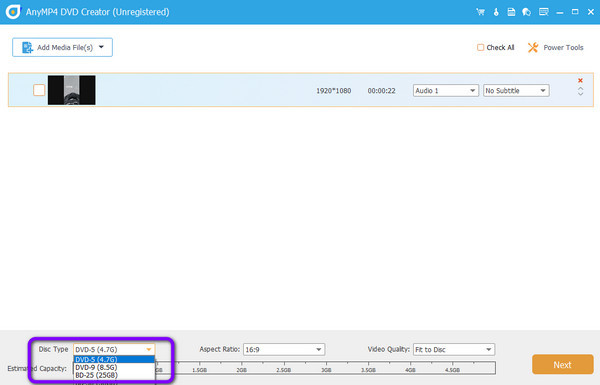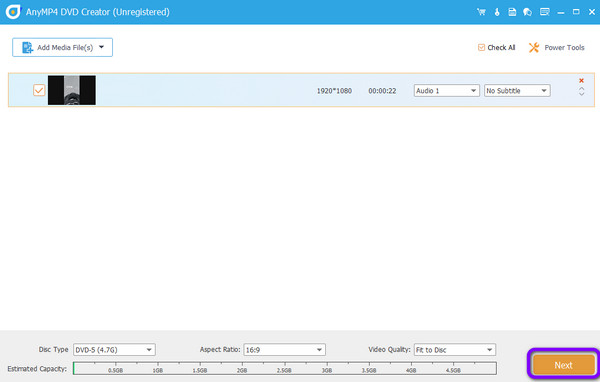PAL vs. NTSC: What is it and How to Change NTSC to PAL and Vice Versa
NTSC and PAL are color encoding systems that Blu-ray and DVD players use. So, if you have a PAL DVD player, playing NTSC and PAL files would be easy. However, if you own an NTSC platform, it can’t read PAL content. One of the reasons is its compatibility. If you want to understand more about the two color encoding systems, you must engage in this article. We will show the differences between the two. Then, we will introduce an amazing program, especially if you want to turn your NTSC to PAL and vice versa for playing the files. So, to know more about NTSC vs. PAL see more in this post.

If you are interested in TV technology or games, you have probably heard the terms PAL and NTSC. But the question is, what are they, and how do they differ? In that case, if you are eager to learn about these two terms, we got you. Come here to know a detailed explanation of NTSC vs. PAL.
NTSC is a format and color encoding system that DVD players use. It is, until recently, TV broadcasting in North America. Since black and white color television began to be replaced, the United States has been utilizing various methods for encoding colors to be broadcast to users’ homes. But these methods, including the black and white television sets, conflict. Also, it cannot interpret the signal’s color which is being sent to them. So, in 1953, NTSC, or the National Television System Committee, enforced and developed a single method. It could be across the nation and suitable with various TV sets. Also, the new NTSC stayed backward-compatible with BnW TVs. The color data is simple to filter out on older grayscale displays. Aside from that, the committee uses 525 scan lines and is split between two interlaced fields of 262.5 lines. Plus, the refresh rate of NTSC is 60Hz. Choosing a refresh rate that can’t sync up with the power grid can result in interference. With that, NTSC has a great frame rate of 30FPS.
Like NTSC, PAL is another video mode system for analog color television. PAL means Phase Alternating Line. It is used in Blu-ray and DVD players. The format was designed in the late 1950s in Germany. It is supposed to deal with particular weaknesses of NTSC. It includes signal instability under proof weather conditions. It is also relevant for European broadcasters. One of the purposes of the format is to solve the problem by reversing other lines in a TV signal and eradicating errors. In addition, PAL runs at a greater resolution compared with NTSC. It includes 625 interlaced lines (5756 of them are visible). Also, in most regions where the PAL format was implemented, its power grid runs at 50GHz. With this, PAL runs 25 FPS due to its interlacing.
In this section, we will compare the two color encoding systems. This way, you will be given an idea about the two. Also, we will explain various factors. It includes color encoding, image quality, FPS, number of resolutions, and more. So, immediately check the details below and learn about NTSC vs. PAL differences.
When talking about NTSC, its receivers have manual tint color correction. Its higher saturation of NTSC makes off-hue colors more visible and noticeable. It is essential to create some adjustments. Meanwhile, PAL can manage color automatically. It utilizes color signal phase alteration to erase hue errors. In addition to that, PAL can easily eliminate chrominance phase errors.
The NTSC contains 525 lines of resolution. More lines are an indication of greater image quality. Therefore, the image/picture quality is less compared to PAL. On the other hand, PAL lines can go out at 50 per second. It can also offer 25 alternating lines. It even produces 25 frames per second. This way, it can result in a faster photo display. Also, 625 is the total lines of resolution in PAL. It means that it is higher than NTSC. So, in terms of camera or image quality, PAL dominates NTSC.
Another difference between these standards is their frames per second rate.NTSC has 29.97, while PAL contains 25. NTSC used to be 30 FPS for every complete alteration of a 60HZ household outlet. But when color broadcasting emerged, the black and white TVs could not interpret brightness and color signals appropriately. It only displays nonsensical photos on the screens. The households in PAL regions utilize another type of outlet with a frequency-50Hz. It also explains the different FPS rates for PAL.
For other information, the two standards are limited to certain parts of the world. NTSC is mostly found in certain countries in South America, North America, Myanmar, Taiwan, the Philippines, Japan, and South Korea. But PAL is more common. It covers most Western Europe, India, China, Africa, and Australia.

Between the two standards, it depends on your location and the audience. If you are making videos for global viewership, we suggest you use the NTSC. Most PAL DVD players, including the VCRs, can read and play NTSC video. On the other hand, some NTSC platforms can’t work with PAL content.
You can check the table below to give you more comparisons between NTSC and PAL.
| Standard | NTSC | PAL |
|---|---|---|
| Abbreviation | National Television System Committee | Phase Alternation Line |
| Sound Carrier | 4.5 MHz | 5.5 MHz |
| Video Bandwidth | 4.2 MHz | 5.0 MHz |
| Vertical Frequency | 60 Hz | 50 Hz |
| Horizontal Frequency | 15.734 kHz | 15.625 kHz |
| Bandwidth | 6 MHz | 7 to 8 MHz |
| Color Subcarrier Frequency | 3.579545 MHz | 4.433618 MHz |
| Lines/Field | 525/60 | 625/50 |
| Active Lines | 480 to 487 | 576 |
As mentioned above, if you want to play NTSC or PAL, there are some restrictions, especially in a location. Also, Some NTSC platforms can’t read and work with PAL content. So, if you want to change your NTSC to PAL and vice versa, we can help you. The ultimate program is the DVD Creator, chosen by Blu-ray Master. If you use the program, you can change your NTSC to PAL and vice versa in an easy way. Also, its interface is very simple to follow, making it more suitable for all users. Aside from that, the procedure will only take a few clicks before getting the final output. You can tell the DVD Creator is reliable enough to get your desired result. So, without further ado, you can follow the simple methods below to easily and quickly change your NTSC to PAL or PAL to NTSC.
Note. Remember that Blu-ray and DVD are labeled as PAL and NTSC. So, ensure your disc is connected to your computer before proceeding.
Get the DVD Creator and install it on your computer. After that, launch it to view its simple interface.
After that, click the Add Media Files button and load the NTSC or PAL file you want to change.

After inserting the file, the next step is to click the Disc Type option. This way, you can choose your preferred output.

Finally, click the Next > Burn button to proceed to the final procedure. After that, you can already get your final output.

Further Reading:
Top Rank VHS to DVD Converters in Digitalizing Old Videos
Transfer Video to DVD: 5 Best Software and Hardware
Is NTSC or PAL better quality?
PAL has a better quality. It is because it has 625 lines of resolution while NTSC only has 525 lines.
Is Japan NTSC or PAL?
In Japan, they are using NTSC. They are with other countries or regions, like South Korea, the Philippines, Taiwan, Myanmar, etc.
Does PAL and NTSC matter anymore?
Yes. It does matter because you must consider the location when using a certain format. Also, we all know that PAL DVD players can read NTSC. However, some NTSC platforms cannot read PAL. These two still matter.
Is NTSC still being used?
Since we are always upgrading, especially in technologies, formats like NTSC are becoming outdated. Yes, it is still used but not as popular as other formats.
You have learned about PAL vs. NTSC by reading the article. Also, you can discover more about their differences, which can help identify their capabilities. Aside from that, the post introduced DVD Creator to help you change your NTSC to PAL and vice versa. So, what are you waiting for? Access the program and have a better experience.
More Reading
Blu-ray VS. 4K: Know Their Similarities and Differences
This post outlines content about 4K and Blu-ray. Come to know their description, similarities, and differences as you read this article when you click.
Blu-ray V.S. DVD – What is the Difference Between Blu-ray and DVD
When you want to purchase the latest movies, or burn them as backup, what is the difference between DVD and Blu-ray? Just learn more details from the article.
DVD Regions: List of DVD Regions and How to Bypass Them
If you are confused about all the DVD regions and don’t know what to do with incompatible foreign DVDs, get the best knowledge and tips here to play all DVDS.
Copy DVD: An In-Depth Review of Top 5 DVD Clone Software
To create a precise and high-quality DVD copy, it is important to choose suitable software. Take a look at some of the top DVD copier tools you can utilize.